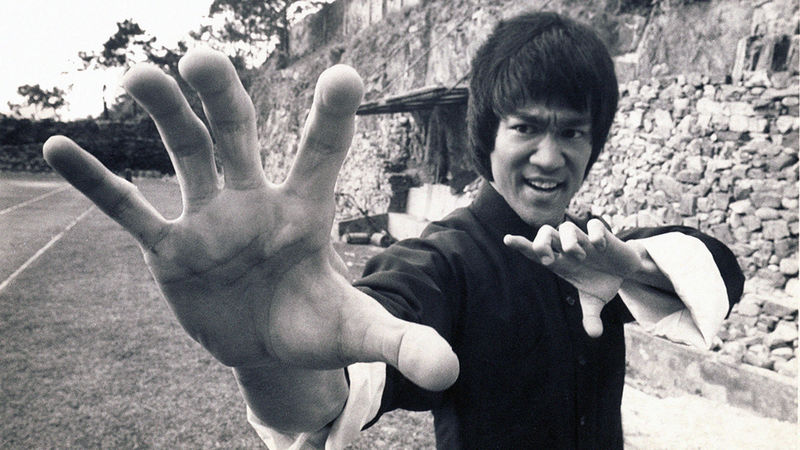Learn Bruce Lee Wing chun JKD Shaolin kung fu yip man best Instructor martial arts class in Mumbai

JKD is the worlds most sought after martial arts founded by the legendary Bruce Lee. JKD is meant for adults upto 60 years. Its meant for one who seeks holistic growth. Bruce believed that each man trains at his own pace. That art training has to be tailormade to the individual. That anyone, young or old, man or woman, fit or unfit can learn at his own pace. That JKD has to be taught personally one on one to a student group less than ten in number. The course can be pursued at your own pace- as fast as two months or as slow as six months.
GENERAL KNOWLEDGE
At CATS Mumbai we teach the art of Bruce Lee martial art JKD in a systematic & scientific manner. JKD, is a hybrid philosophy of martial arts heavily influenced by the personal philosophy and experiences of martial artist Bruce Lee.
JKD is the result of the lifelong martial arts development process Lee went through. He stated his concept does not add more and more things on top of each other to form a system, but rather selects the best thereof.
Principles
The following are principles that Lee incorporated into Jeet Kune Do. These were universal combat truths that were self-evident, and would lead to combat success if followed. Familiarity with each of the “Four ranges of combat”, in particular, is thought to be instrumental in becoming a “total” martial artist. JKD teaches that the best defence is a strong offense, hence the principle of an “intercepting fist”..Stance
Seen in many of his movie fight scenes such as in The Way of the Dragon vs Chuck Norris, Bruce Lee fought in a side southpaw horse stance. His jabs and crosses came from his right hand and followed up with a lot of side kicks. Instead of a common check seen in Muay Thai, Bruce uses an oblique leg kick to block a potential kick. To learn contact our Mumbai center.
Footwork
Bruce Lee’s nimble and agile skipping-like footwork is seen in his movies. The footwork also has its influences from fencing
Straight lead
Lee stated that, “The leading straight punch is the backbone of all punching in Jeet Kune Do.” The straight lead is not a power strike but a strike formulated for speed. The speed is attributed to the fact that the fist is held out slightly making it closer to the target and its accuracy is gained from the punch being thrown straight forward from one’s centreline.
Non-telegraphed punch
.We teach this in our Mumbai center. Explosive attacks with no telegraphing signs of intention were best. The key is that one must keep one’s body and arms loose, weaving one’s arms slightly and only becoming tense upon impact. Consequently, non-telegraphed movement is an essential part of Jeet Kune Do philosophy.
“Be Like Water”
Lee emphasized that every situation, in fighting or in everyday life, is varied. To obtain victory, therefore, it is essential not to be rigid, but to be fluid and able to adapt to any situation. He compared it to being like water: “Empty your mind, be formless, shapeless, like water. If you put water into a cup, it becomes the cup. You put water into a bottle and it becomes the bottle. You put it in a teapot it becomes the teapot. Now water can flow, or it can crash. Be water, my friend.”
Economy of motion
Jeet Kune Do seeks to waste no time or movement, teaching that the simplest things work best, as in Wing Chun. Economy of motion is the principle by which JKD practitioners achieve. This is available in Mumbai.
- Efficiency: An attack which reaches its target in the least amount of time, with maximum force.
- Directness: Doing what comes naturally in a disciplined way.
- Simplicity: Thinking in an uncomplicated manner; without ornamentation.
Stop hits
“When the distance is wide, the attacking opponent requires some sort of preparation. Therefore, attack him on his preparation of attack. To reach me, you must move to me. Your attack offers me an opportunity to intercept you.” This means intercepting an opponent’s attack with an attack of one’s own instead of simply blocking it. It is for this concept Jeet Kune Do is named.
Simultaneous parrying and punching
When confronting an incoming attack, the attack is parried or deflected, and a counterattack is delivered at the same time. Simultaneous parrying & punching utilizes the principle of economy of motion by combining attack and defence into one movement, thus minimizing the “time” element and maximising the “energy” element.
Low kicks
JKD practitioners believe they should direct their kicks to their opponent’s shins, knees, thighs, and midsection, as in Wing Chun. These targets are the closest to the foot, provide more stability and are more difficult to defend against. Maintaining low kicks utilizes the principle of economy of motion by reducing the distance a kick must travel
Four ranges of combat
- Kicking
- Punching
- Trapping
- Grappling
This range of training serves to differentiate JKD from other martial arts. Lee stated that most traditional martial arts systems specialize in training at one or two ranges.
Five ways of attack
The original five ways of attack are:
- Single Direct Attack (SDA)
- Attack By Combination (ABC)
- Progressive Indirect Attack (PIA)
- (Hand) Immobilization Attack (HIA)
- Attack By Drawing (ABD)
Combat realism
One of the premises that Lee incorporated in Jeet Kune Do was “combat realism”. As Bruce Lee insisted that martial arts techniques should be incorporated based upon their effectiveness in real combat situations. This would differentiate JKD from other systems where there was an emphasis on “flowery technique”, as Lee would put it. Lee claimed that flashy “flowery techniques” would arguably “look good” but were often not practical or would prove ineffective in street survival and self-defence situations. To learn Bruce Lee Martial Art JKD contact our Mumbai center.
Another aspect of realistic martial arts training fundamental to JKD is what Lee referred to as “aliveness”. This is the concept of training techniques with an unwilling assistant who offers resistance. Lee made a reference to this concept in his famous quote “Boards don’t hit back!”. Lee utilized safety gear from various other contact sports to allow him to spar with opponents “full out”.
At CATS Mumbai we follow the similar methodology of teaching Bruce Lee Martial Art JKD.
